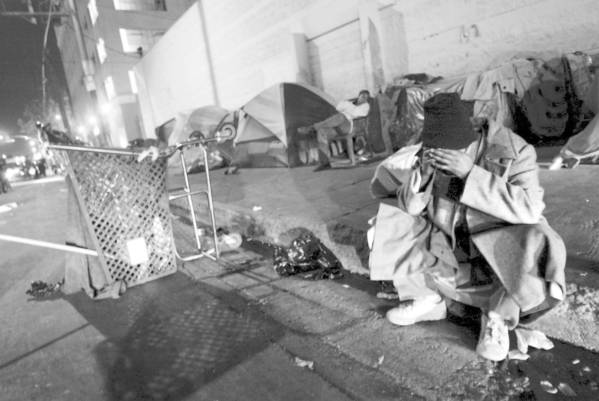New Los Angeles homeless program shows results
-
Client: (Home For Good)
A 100-day test of the system, which aims to quickly place chronically homeless people in housing with medical and social services, is seen as a success.
Officials released the results of a pilot program Tuesday described as the Match.com of homeless services, designed to get the sickest, most endangered people off the streets and sidewalks of skid row for good.
The 100-day project brought 20 government and nonprofit agencies together to build a computerized data-gathering and management system to quickly place hard-core sidewalk dwellers in housing with medical, rehab and social services.
Under the new system, case managers seek out long-term homeless people under bridges and down back alleys and score them on their mental and physical disabilities, how often they visit emergency rooms or jails, and their general medical condition. Housing agencies work off a single waiting list, giving priority to those already identified as most in need of help.
In little more than three months, the new system had “leased up” 35 people in as few as nine days, organizers said.
Authorities hope to put the tracking and placement tool in place countywide.
Homeless people historically have had a tough time wending their way through the patchwork of private and government housing aid out there, each with its own qualifications and restrictions. Waiting for an opening can take as long as four years, organizers said.
Most of the people placed by the project had been homeless for years or decades, or were veterans newly home from Iraq or Afghanistan. One had been on the streets for 44 years.
Raymond Fuentes, leasing supervisor for Skid Row Housing Trust, said many of them gave up long ago looking for housing, either because they were too sick or too discouraged by the maze of requirements to push through the bureaucracy. All five waiting lists for his agency’s two dozen buildings are closed, with up to 200 people signed up to fill the occasional opening, Fuentes said.
“Some of the younger, healthier people are going to muscle their way in,” Fuentes said.
The pilot program builds off recent research showing that putting homeless people in housing and offering them medical and other treatments with no strings attached is more cost-effective than forcing them to get well or kick a drug or alcohol addiction before receiving services.
Los Angeles County’s most entrenched street dwellers make up a quarter of its roughly 51,000 homeless people but consume 75% of its homeless financial resources.
The approach was pioneered by Project 50, a county experiment to house 50 of the county’s most intractable skid row dwellers. A county study found that the program saved $238,700 over two years by reducing the homeless churn through the county’s jails, hospitals and shelters.
The project was developed under the auspices of Home for Good, an initiative of United Way of Greater Los Angeles and the Los Angeles Area Chamber of Commerce with the goal of getting all veterans and chronically homeless people in the county into housing by 2016.
“We are changing the system,” said David Hamlin of the Los Angeles Business Leaders Task Force on Homelessness.
Follow the link to view the original article posting on the LATimes.com: http://www.latimes.com/news/local/la-me-chronic-homeless-20130626%2c0%2c2725002.story

